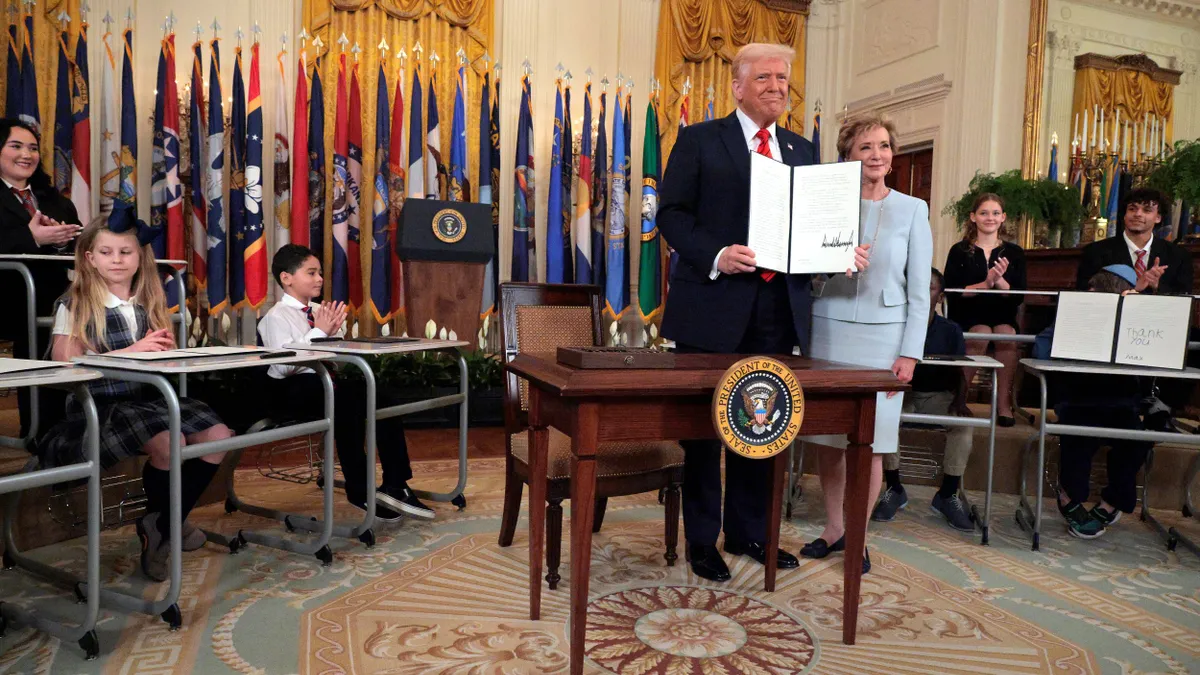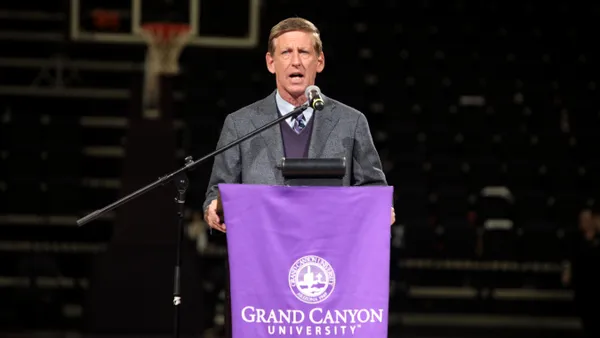Dive Brief:
- International enrollment at U.S. colleges could drop by as much as 150,000 students this fall unless the federal government ramps up its issuing of visas this summer, according to recent projections from NAFSA: Association of International Educators.
- The financial consequences could be severe. A 30% to 40% decline in new foreign students would lead to a 15% overall drop in international enrollment and, with it, a potential loss of $7 billion in revenue for colleges and 60,000 higher education jobs, NAFSA estimated.
- The organization attributed the projected decline to various Trump administration actions, including travel bans and an earlier suspension of visa interviews. NAFSA called on Congress to direct the State Department to expedite processing for student visas.
Dive Insight:
Preliminary data from early this year suggested “flat to modest growth” in international student enrollment, but NASFA pointed to policy changes that could alter the landscape ahead.
Since President Donald Trump retook office this year, many in the higher education world have worried international enrollment would decline in response to his policies and the perceptions abroad about America and how welcoming it will be to foreign students.
His administration has indeed taken an aggressive stance on admitting students from outside the U.S. In June, Trump signed an executive order banning travel from 12 countries and imposing restrictions on seven others. And the president has recently considered bans on 36 more countries.
Also in June, the State Department announced expanded screening that included surveillance of social media posts for applicants of F, M and J nonimmigrant visas.
That followed an announcement in May from Secretary of State Marco Rubio that the U.S. would move to “aggressively revoke” visas for Chinese students. Trump later appeared to walk back that stance on social media, adding more confusion as to the administration’s actual policy.
NAFSA pointed to reports of limited to no visa review appointments for prospective international students in India, China, Nigeria and Japan. The organization noted that India and China send the most international students to the U.S., while Nigeria and Japan are the seventh and 13th leading home countries, respectively.
On top of those moves, the administration has demonstrated interest in using international student enrollment as leverage against institutions and activists in Trump’s crosshairs.
Through various directives, for example,Trump and his government have tried to bar Harvard from enrolling international students in the administration’s ongoing feud with the university. Each of those efforts have been temporarily blocked in court. Had they not been, the consequences for Harvard would likely be dire. In the 2024-25 academic year, the Ivy League university’s roughly 6,800 foreign students made up 27.2% of its student body.
Earlier this year, the administration also moved to deny visas for pro-Palestinian protestors.
A July report from analysts with Moody’s ratings services pointed to the potential financial fallout for colleges from declines in international enrollment. They noted that foreign students tend to pay full tuition and fees, heightening the potential revenue impact.
A stress test by the analysts found that for 130 colleges they rate, a 20% drop in international enrollment would translate into a 0.5 percentage-point hit to their earnings margin before taxes, interest, depreciation and amortization. For 18 colleges, EBITDA margin loss would be 2 to 8 points. Those with already low margins could face “significant financial stress,” the analysts said.














